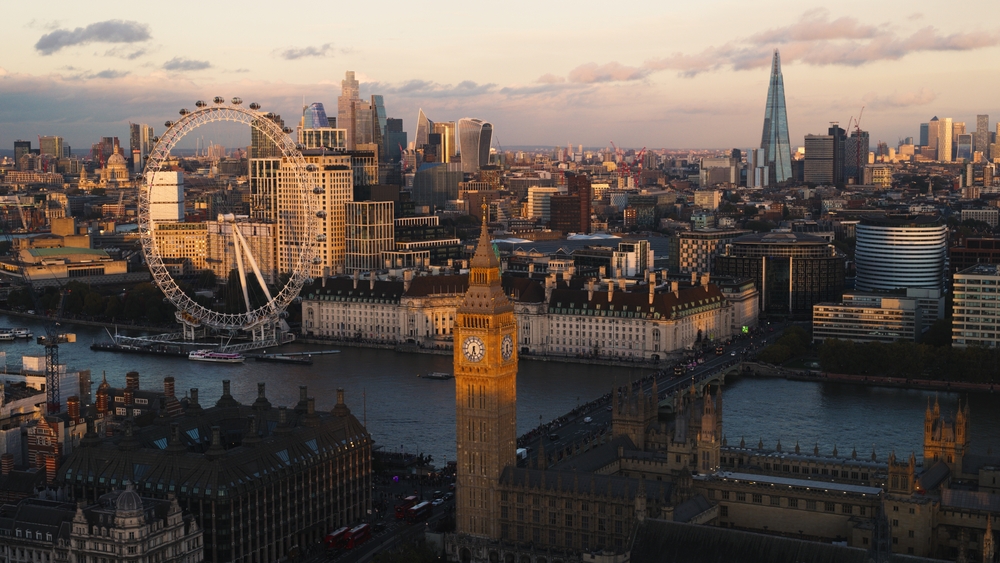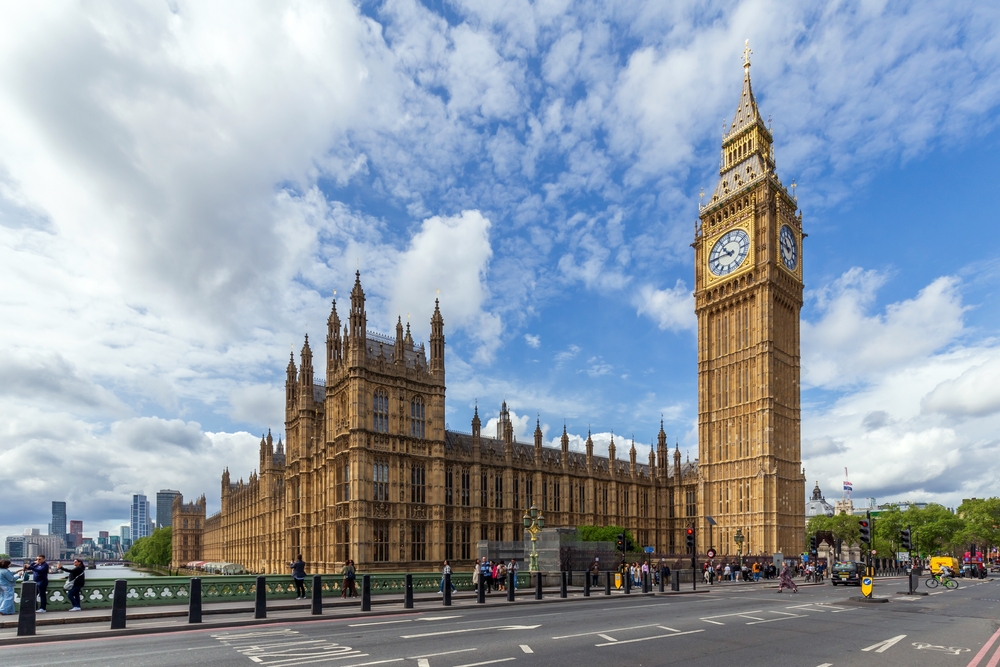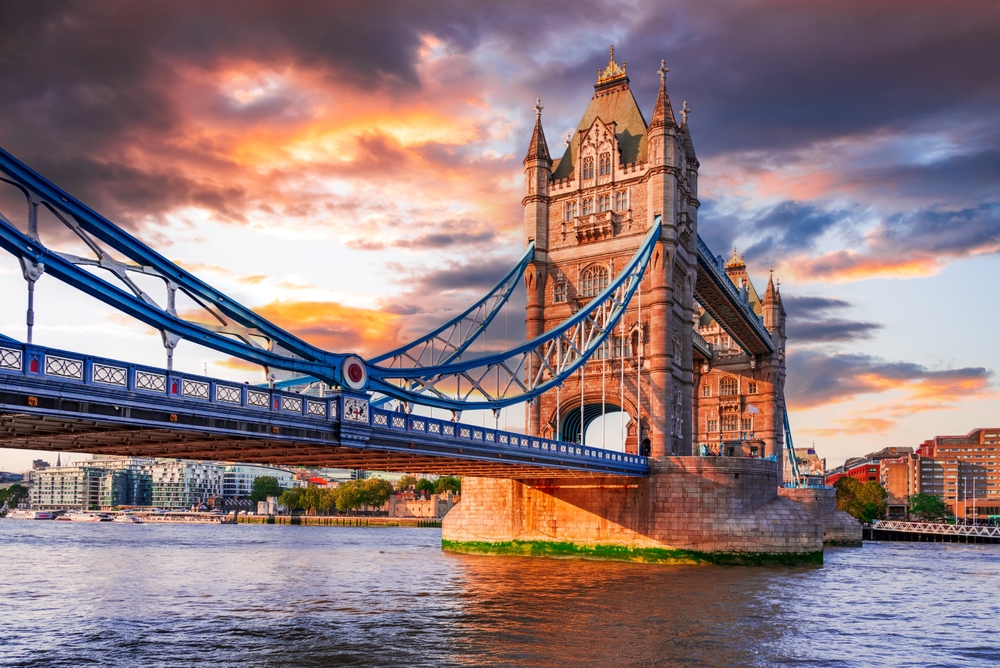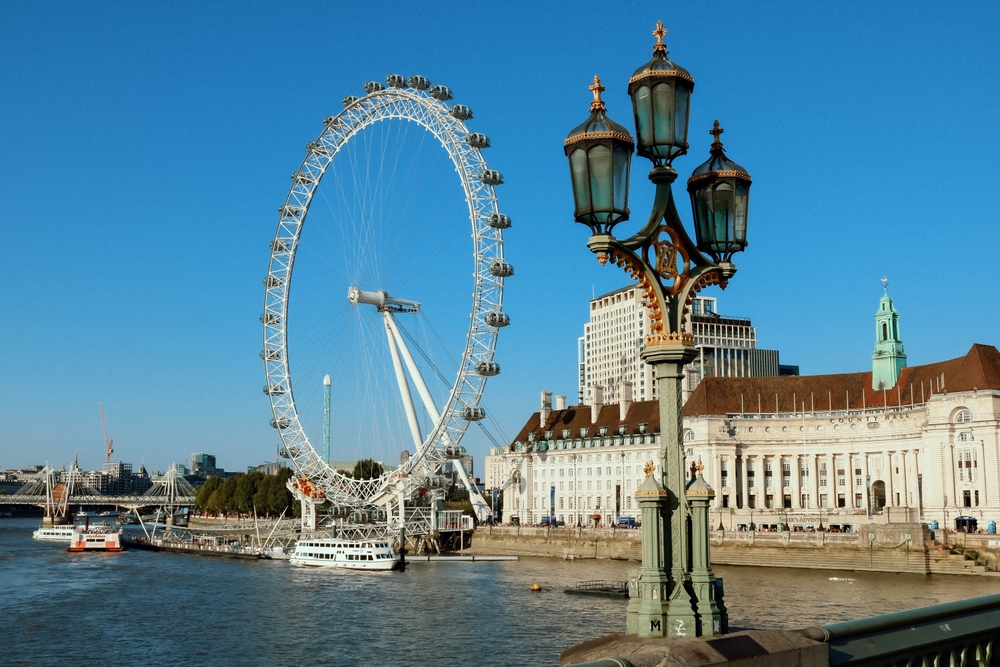8 must-see historic monuments in London

London, the thousand-year-old capital of the United Kingdom, is packed with historic monuments that tell the fascinating story of the British Empire. From the Tower of London to the Houses of Parliament, every stone bears witness to centuries of history, power and culture. Every year, these historic London landmarks attract millions of visitors from all over the world to admire their exceptional architecture and discover their secrets. Whether you’re a history buff, an architecture enthusiast or simply curious, this selection of 8 must-see monuments will plunge you into the heart of London’s soul. Get ready for an extraordinary journey through the centuries, where each monument reveals a unique facet of this legendary metropolis.
200 audioguided tours for cities all around the world
Download1. Tower of London
The Tower of London is undoubtedly one of the most emblematic historic monuments in the British capital. Founded by William the Conqueror in 1066, this thousand-year-old fortress has stood the test of time, serving in turn as a royal palace, a fearsome prison and a treasury. Now a UNESCO World Heritage Site, it houses the precious jewels of the British Crown, symbols of the monarchy. (Tower Hill, London EC3N 4AB, rated 4.4/5 on Google out of 45,000 reviews)
The imposing architecture of the White Tower, built of Caen stone, majestically dominates the banks of the Thames. Its thick walls have been home to such illustrious figures as Anne Boleyn, Lady Jane Grey and Sir Walter Raleigh. The tour includes an opportunity to explore the various towers, including the famous Bloody Tower, and to attend the Key Ceremony, a centuries-old tradition that marks the closing of the fortress every evening. The famous ravens, living legends of the place, watch over this monument steeped in history according to the prophecy that predicts the fall of the kingdom if they were to disappear.
Also read the London guide:
- London’s culinary specialities
- Top 10 activities in and around London
- Hotels in London (where to stay)
- British Museum in London
- Hyde Park in London
- Christmas in London: what to see, what to do and where to stay
- Spring in bloom in London: the Chelsea Flower Show
2. The Palace of Westminster and Big Ben

The Palace of Westminster, seat of the British Parliament, is one of London’s most recognisable historic landmarks, with its famous clock tower housing Big Ben. Rebuilt in the 19th century after the fire of 1834, this masterpiece of Victorian neo-Gothic architecture stretches majestically along the River Thames. (Westminster, London SW1A 0AA, rated 4.5/5 on Google out of 25,000 reviews)
Designed by Sir Charles Barry and Augustus Pugin, the building impresses with its slender spires, Gothic vaults and 1,100 rooms spread over four floors. The Elizabeth Tower, commonly known as Big Ben after its largest bell, rises to 96 metres and has set the pace of London life since 1859. Westminster Hall, a medieval vestige dating back to 1097, testifies to the site’s age and has hosted some of the most important trials in British history. A visit to London without seeing this symbol of British democracy would be unthinkable.
3. Westminster Abbey
Westminster Abbey has been the spiritual and historic heart of the British monarchy for over a thousand years. This marvel of English Gothic architecture has been the scene of every royal coronation since 1066, as well as numerous royal weddings, including that of Prince William and Kate Middleton in 2011. Rebuilt by Henry III in the 13th century, it impresses with its 31-metre high vaults and multicoloured stained glass windows (20 Deans Yard, London SW1P 3PA, rated 4.4/5 on Google out of 18,000 reviews).
Poets’ Corner contains the tombs and memorials of the greatest British literary figures, from Chaucer to Dickens and Shakespeare. The Henry VII Chapel, a jewel of Perpendicular Gothic art, dazzles with its fan-shaped ceiling and finely carved choir stalls. More than 3,300 famous people are buried in this royal necropolis, making every step a journey through British history. Visitors can also admire St Edward’s throne, which has been used for coronations for 700 years.
4. Buckingham Palace
The official residence of the British royal family since 1837, Buckingham Palace is one of London’s most visited monuments. This imposing residence with its 775 rooms, including 19 state flats, bears witness to royal pomp through its sumptuous drawing rooms adorned with artistic masterpieces. Originally built in 1703 for the Duke of Buckingham, the palace was transformed by architect John Nash into a residence worthy of the British Empire (London SW1A 1AA, rated 4.4/5 on Google out of 35,000 reviews).
The Portland stone east facade, added in 1913, provides the perfect backdrop for the famous Changing of the Guard ceremony, which attracts thousands of spectators every day. The State Rooms, open to the public during the summer, display an exceptional collection of works by Rembrandt, Rubens and Canaletto. The Royal Balcony, witness to great moments in British history, overlooks the Mall where crowds gather for national events. Let yourself be guided by theNavaway itinerary to discover all the secrets of this iconic monument.
Download the audio tour to discover London on foot and on your own
Discover London’s historic landmarks on our interactive audio tour. This unique itinerary allows you to explore the British capital at your own pace, following a carefully designed route that links the must-see sites. Each stop is enriched with historical anecdotes, architectural details and practical tips to make the most of your visit. Discover the complete London tour and let yourself be carried away by this immersive experience at the heart of British history.
5. Tower Bridge

An architectural symbol of London, Tower Bridge has spanned the River Thames majestically since 1894. This Victorian neo-Gothic bascule bridge represents an engineering prodigy of its time, combining functionality and aesthetics in perfect harmony. Designed by Sir Horace Jones and Sir John Wolfe Barry, it allows ships to sail up the Thames thanks to its revolutionary hydraulic mechanism, which is still in use today. (Tower Bridge Rd, London SE1 2UP, rated 4.4/5 on Google out of 55,000 reviews)
The two 65-metre-high towers, linked by panoramic walkways with glass floors, offer spectacular views of the City and the Tower of London. The perfectly preserved Victorian machine rooms reveal the workings of this exceptional mechanism, which still lifts the deck more than 800 times a year. The permanent exhibition tells the fascinating story of the bridge’s construction, a major technical challenge at the end of the 19th century that took eight years to complete and involved 432 workers.
6. Saint Paul’s Cathedral
A masterpiece of English Baroque architecture, St Paul’s Cathedral has dominated the London skyline for over three centuries. Designed by Sir Christopher Wren after the Great Fire of London in 1666, the cathedral impresses with its monumental 111-metre-high dome, the second largest in the world after St Peter’s in Rome. It took 35 years to build, from 1675 to 1710, using the best craftsmen of the time. (St. Paul’s Churchyard, London EC4M 8AD, rated 4.5/5 on Google out of 22,000 reviews)
The interior boasts exceptional acoustics, particularly in the Whispering Gallery, located 30 metres above the ground, where the slightest whisper can be heard around the entire circumference. Victorian mosaics, sculptures by Grinling Gibbons and paintings by Sir James Thornhill create an artistic ensemble of unprecedented richness. The crypt contains the tombs of such illustrious figures as Admiral Nelson, the Duke of Wellington and Sir Christopher Wren himself, making this cathedral a British pantheon.
7. London Bridge
The British capital’s iconic bridge, London Bridge embodies two millennia of London’s history. The current bridge, inaugurated in 1973, follows a long line of structures that have shaped the city’s identity since Roman times. The first permanent bridge over the Thames was built around the year 50, and for centuries it provided the only passage between the two banks of the river, making London a major commercial crossroads in medieval Europe. (London Bridge, London SE1 9DD, rated 4.2/5 on Google out of 8,500 reviews)
The medieval London Bridge, built in stone around 1200, was a veritable city on the water, with houses, shops and even a chapel. Demolished in 1831, it was replaced by a granite bridge that crossed the Atlantic to be reassembled in Arizona after being sold in 1968. This extraordinary anecdote testifies to the special place this bridge occupies in the world’s collective imagination. Today, the modern concrete and steel London Bridge carries 40,000 pedestrians a day, while offering unique views of London’s historic monuments.
8. London Eye

London’s iconic contemporary landmark, the London Eye revolutionised the London skyline when it opened for the new millennium in 2000. This observation wheel, 135 metres in diameter and the tallest in Europe when it was built, offers an unprecedented view of the capital’s architectural treasures. Designed by architects David Marks and Julia Barfield, it symbolises London’s entry into the 21st century while paying tribute to its historic heritage (Riverside Building, County Hall, London SE1 7PB, rated 4.3/5 on Google out of 85,000 reviews).
Its 32 air-conditioned glass capsules, representing London’s boroughs, can accommodate up to 25 passengers for a 30-minute journey over the Thames. On a clear day, the view stretches for up to 40 kilometres, revealing an exceptional panorama of Westminster, the City, Greenwich and the surrounding hills. This technical feat, assembled by floating cranes on the Thames, is a testament to modern British innovation. More than 3.75 million visitors a year make the London Eye the UK’s most popular ticketed attraction, confirming its status as London’s newest landmark.
In conclusion, these eight historic monuments form the beating heart of London, each telling a unique chapter in the British epic. From the thousand-year-old Tower of London to the contemporary innovations of the London Eye, they bear witness to the constant evolution of a metropolis that knows how to reconcile tradition and modernity. Each stone, each archway, each perspective reveals the soul of a city that has managed to survive the centuries while keeping its exceptional heritage intact. To help you discover these architectural treasures, theNavaway audio tour takes you step by step on an unforgettable historical adventure, revealing the secrets and anecdotes that only true lovers of London will know.
FAQ – London’s historic monuments
What is London’s oldest historical monument?
The Tower of London, founded by William the Conqueror in 1066, is London’s oldest surviving historic monument. Although Westminster Hall (1097) is also very old, the Tower of London is the best-preserved medieval architectural ensemble in the British capital.
How long will it take to visit London’s main historic monuments?
For a complete visit to the 8 essential monuments, allow at least 3-4 full days. Each major site (Tower of London, Westminster Abbey, St Paul’s) takes 2-3 hours to visit, while the outside monuments can be admired more quickly on a guided walk.
Can I visit the inside of Big Ben?
Visits to the Elizabeth Tower (Big Ben) are exceptionally limited to British residents and by reservation only with Members of Parliament. Restoration work under way until 2028 will further restrict access. The exterior can still be admired freely from Parliament Square.
Which monuments offer the best panoramic views of London?
The London Eye offers the most spectacular view at 135 metres. St Paul’s Cathedral also offers exceptional panoramic views from its Golden Gallery (85m), while Tower Bridge allows you to admire the Thames and the City from its 42-metre-high glass walkways.
Are London’s historic monuments accessible to people with reduced mobility?
Most monuments have facilities: lifts at the London Eye and Tower Bridge, adapted access at Westminster Abbey and Buckingham Palace. However, some historic areas (the towers of the Tower of London, the dome of St Paul’s) remain inaccessible due to their ancient architecture. Find out more beforehand on the official websites.
Are there any tourist passes for visiting London’s many historic monuments?
The London City Pass includes access to the Tower of London, Westminster Abbey, St Paul’s and Tower Bridge, offering substantial savings. The 2-3 day pass is a particularly good way of discovering the major historic monuments while avoiding the queues thanks to the included queue-cutting access.
200 audioguided tours for cities all around the world
Download
